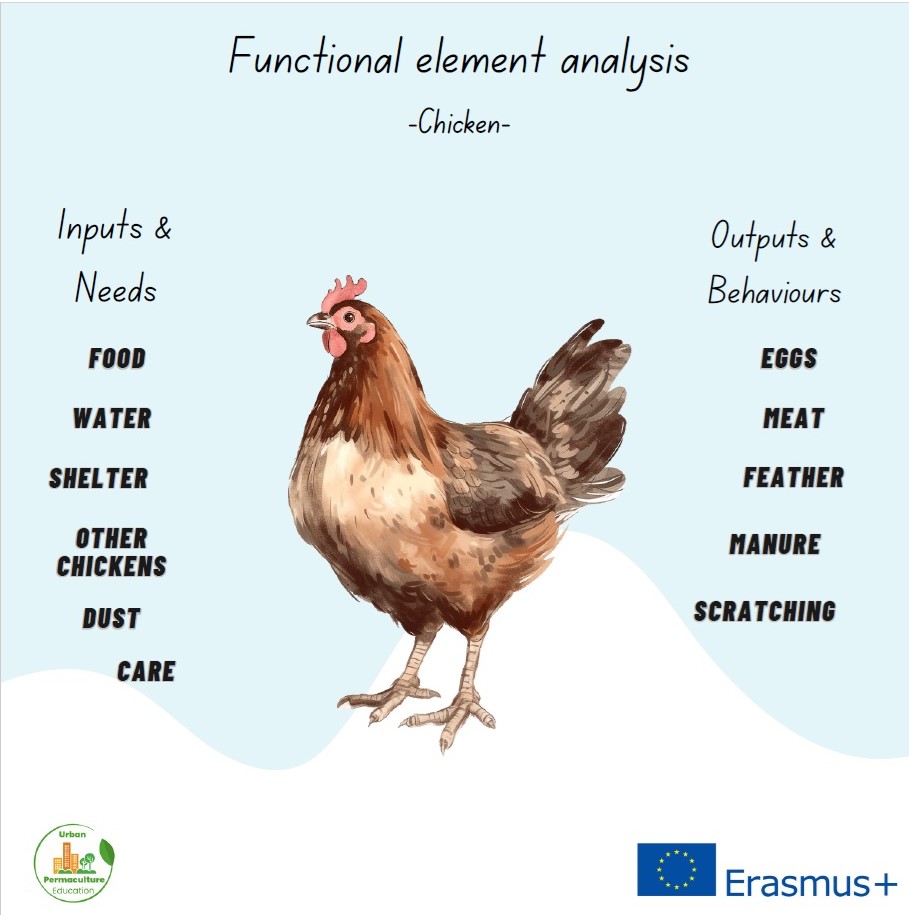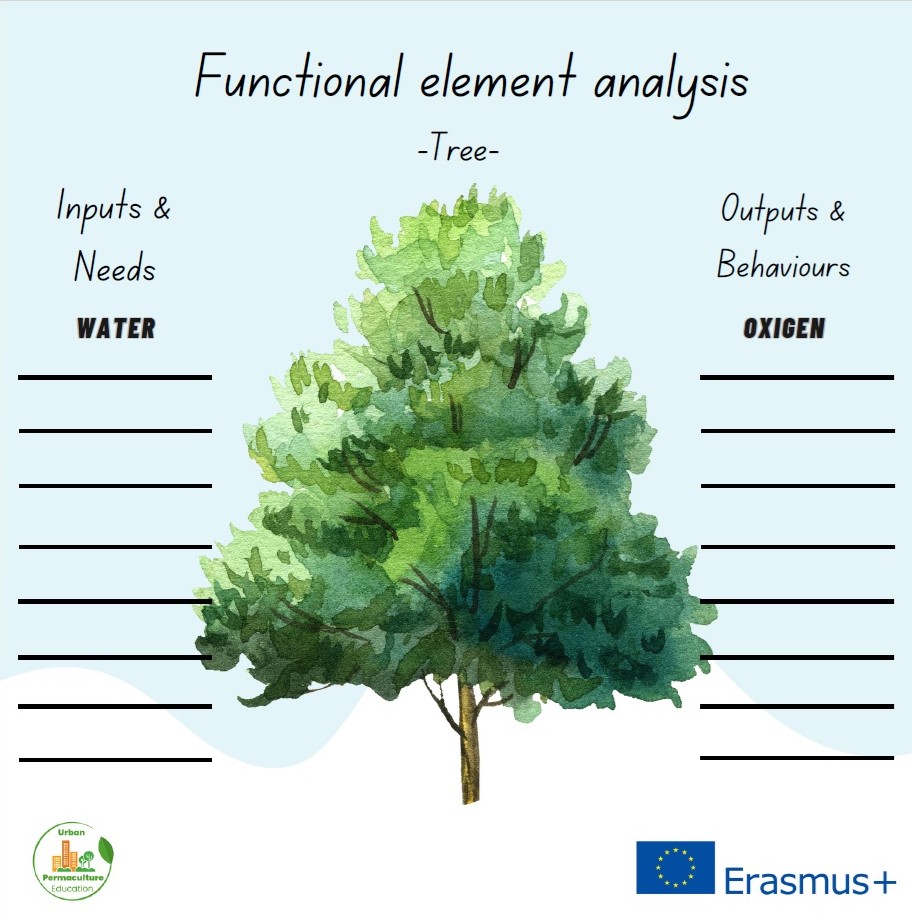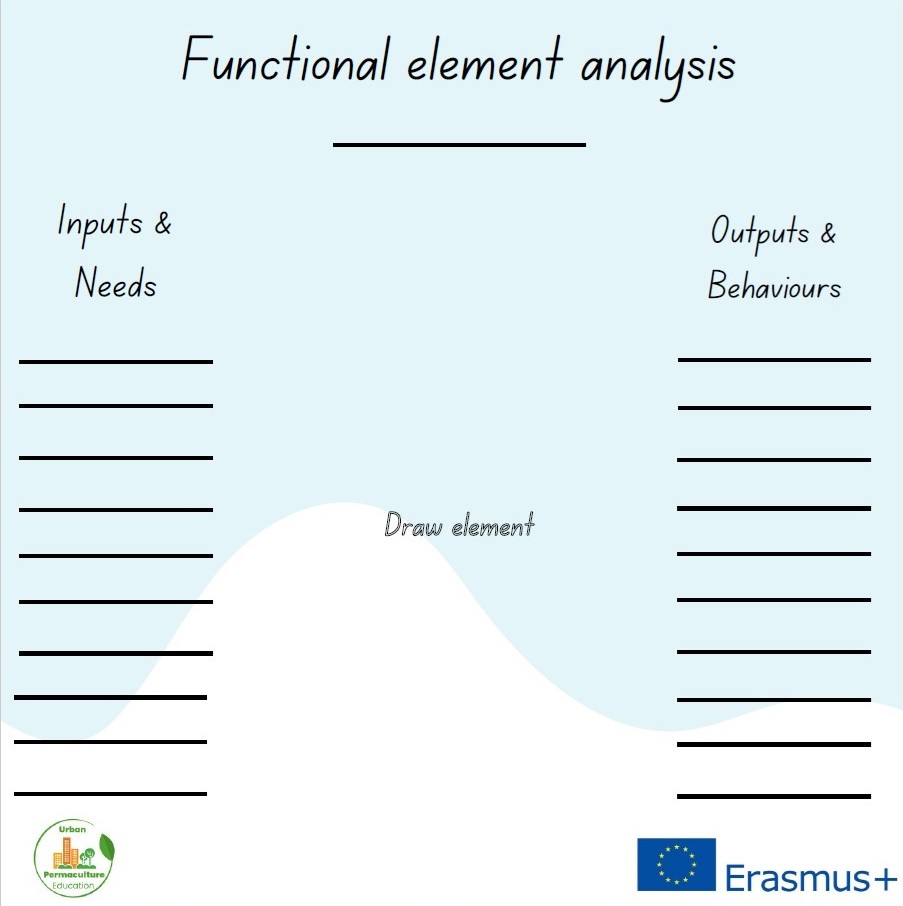Duration: 45 minutes
In our design, each element serves a specific function, so we’ve carefully integrated and positioned them accordingly. In this lesson, we’ll learn about functional analysis, understanding the role of each design element, and what is needed for it to function effectively.
The principles that guide us when designing are:
“Let one element perform several functions,” which achieves efficiency and practicality, and “Let several elements perform essential functions,” which is important for system security.
In order to accomplish that, we need to analyze the individual elements.
Every element serves a specific function, which is why we incorporate it into the system. For example, a garden bed is where we plant vegetables, a fruit tree provides us with fruits, and a faucet gives us access to water. Our goal is to fulfill users’ needs by strategically planning elements that cater to those needs. However, during planning, we often focus solely on one basic need that an element fulfills, without considering other needs that it could also partially or fully meet, as well as its interactions with other elements.

For the element to perform its function successfully, it is necessary to ensure certain conditions. To ensure that the garden bed can successfully fulfill its purpose of growing vegetables, it needs to meet certain conditions. It should be positioned to receive ample sunlight and be shielded from strong winds. The soil must be high quality with sufficient organic matter to provide the plants with the necessary water and nutrients for healthy growth. When planting a fruit tree or installing a faucet, similar considerations should be considered. The faucet should be easily accessible and connected to a water source to ensure practicality.
When we consider all the conditions and inputs a certain element needs, we reduce the chance of not providing everything necessary for its optimal functioning and intended purpose.
Each element has its unique characteristics that affect its needs and the outcomes of its actions. These characteristics should be considered when choosing an element. Whether it’s the type of animal, variety of vegetables, or a machine with different technical specifications, the specific characteristics of each element should be taken into account.
The presence of one element can be a requirement for the functioning of another. For example, for a composter to work effectively, we need kitchen and garden biowaste as well as paper waste from packaging. Therefore, it’s practical to place the composter close to a source that provides the necessary raw materials for its operation. Additionally, the composter should be located near the garden bed where the produced compost will be used.

Let’s apply this logic of thinking when designing, and the information gathered through functional analysis helps us to establish the most efficient network of relationships and connect elements in space by connecting processes into logical chains.
“The goal is to understand the complexity of the system, including each individual element and its connections with other parts. By analyzing each element’s function, characteristics, and needs for proper functioning, as well as the outcome of its actions, we can obtain valuable information about how to place it optimally in the system we design. This helps us achieve the best results while minimizing the use of resources and energy.”

Here you can find nuggets that can help you implement the lesson.